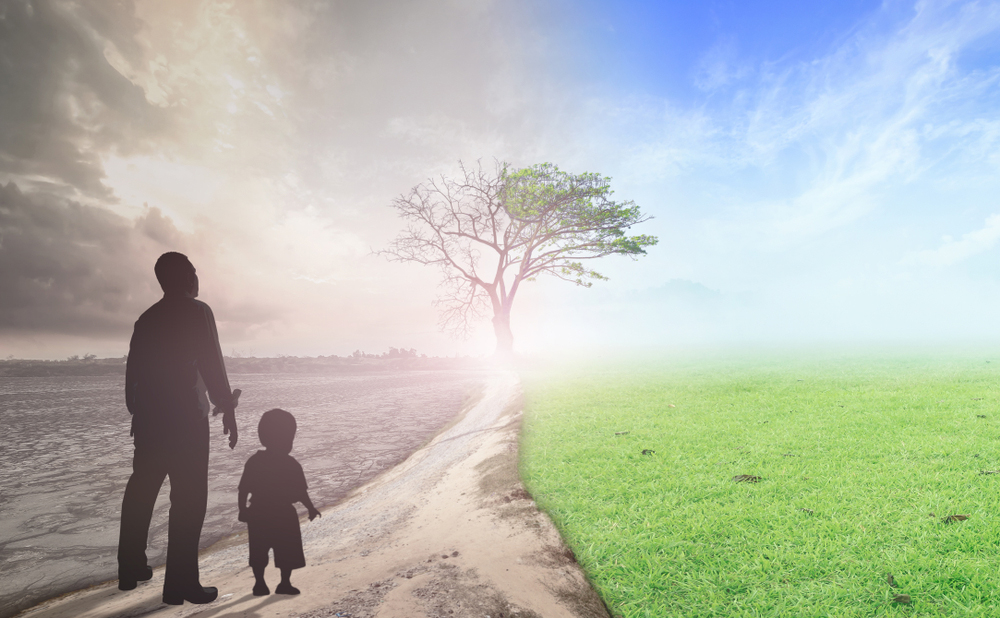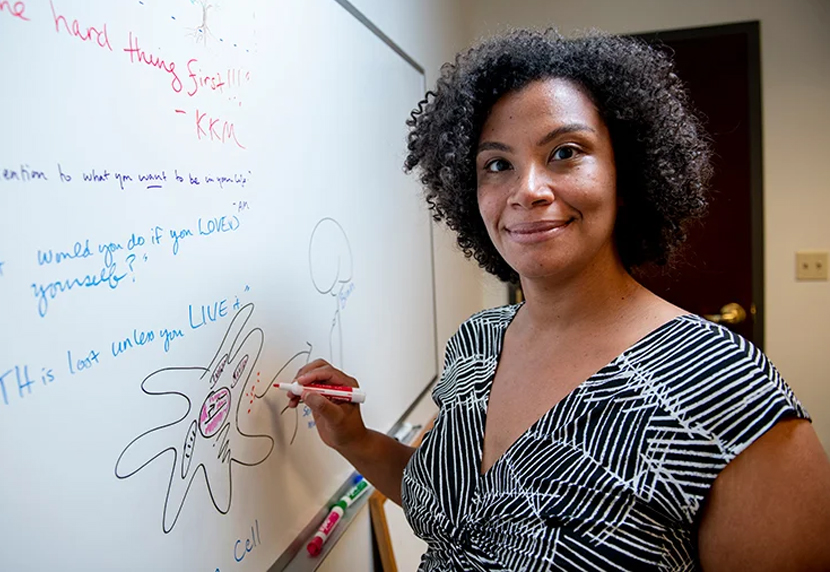Somewhere around last few years, I started fielding questions about climate change in my work as a child psychiatrist.
“Have you seen the Mad Max movies?” kids would ask. “I mean, that’s where we’re heading.”
There is also growing and sometimes maddening frustration that adults offer only frightening predictions …
Unlike other references to much-loved dystopian pop culture references, these comments had not an ounce of wistfulness to them. No one among my patients is longing for the opportunity to live like Mad Max, driving break-neck across a dry and barbaric landscape in search of water and fuel to live out the end of days. Instead, virtually every kid in my practice is truly, honestly, and earnestly frightened for the future of the planet. The sky is literally falling, they’re saying, and we adults seem unable, once again, to get it together and fix this slow burn apocalypse.
Their fears make me take notice for all sorts of reasons. These kids are distressed, and my job is to help them with distress. And there’s something more. I think what I’m seeing is indicative of a cultural trend with genuine mental health consequences. Kids of all ages are literally and totally freaked out about climate change. This has been documented in and outside of clinical settings. The growing sense that nothing can be done has contributed to a dangerous lack of perceived efficacy among young people – dangerous because we need them to help us to solve these issues. There is also growing and sometimes maddening frustration that adults offer only frightening predictions without any sense of solution.
Climate Change and Coming Together
All of this makes clear what we already intuitively know. You want to really frustrate kids? Tell them that the sky is falling and that there’s not a single thing they or anyone else can do about it. That seems a recipe for despair or perhaps impulsive nihilism. However, it can also lead to the coming together that we saw in last year’s school-aged participants in the climate strike.
This post is not to argue the merits of current evidence that the earth’s climate is dangerously changing. There is widespread scientific support for this conclusion, and we don’t need to discuss whether it is man-made or the normal ebbs and flows of climate over the centuries. The bottom line is that we need to do something to avert what will be a slow burning disaster scenario.

• Gaming Disorder: When Does Playing Mean Trouble?
• Clay Center Launches Youth Mental Health Initiative
• How Common Are Behavioral Issues Among Kids?
• How to Be “Smart” in the Time of Smartphones
We don’t do our children any favors by discussing an inevitable disaster and the absence of solutions. All we end up fostering is heightened psychological distress. The data on these conclusions are clear. Pretty much every psychiatric symptom is made worse by climate change as well as our suggestion-less hand-wringing.
Climate Change Action and Hope
But what can we do? Adults like me need to avoid unnecessary dire language.
We can offer efficacy.
We can offer agency.
We can give children and teens the opportunity to take part in and be part of a national and international effort to turn this ship around.
We can and should give our children hope. That’s not just because hope feels good. We should do this because hope combined with meaningful action alleviates mental health suffering. This is the whole premise of positive psychology. And it turns out that there’s still time to make things on the planet a whole lot better.
As with all issues regarding young people, keeping things developmentally appropriate is essential. With those caveats in mind, here are some guidelines for instilling hope in place of what can seem like relentless despair.
For Toddlers
Environmental education starts in preschool or even younger. This isn’t the setting for dire predictions – it’s the setting for doing things. For gardening, for planting trees, for picking up trash in public parks. It’s the setting to offer simple lessons of the ways everything on our planet is interconnected. It’s the setting for establishing earth-friendly habits. If toddlers see or hear stories of a bleak and dire view of the future from the press or other adults, it makes sense to reassure them that the adults in their world are working on the problem, and that the kids can make a difference simply by taking care of their local environments.
Keep the pessimism at bay, but let them know that we’re counting on them to help the rest of us care for our planet.
For School-Aged Kids
School aged kids love knowing stuff. They are knowledge and fact repositories. This is why kids at this age take stuff apart. They thrive on trying to figure out how everything works. This is also why they love the symmetry of ecology – the fact that trees breathe the very carbon dioxide that we exhale and in turn produce the very oxygen that we need to live. Let school-aged kids brainstorm together. Create class, family, or local projects. Give them tasks and see what they can do to solve the problems that these tasks address. Keep the pessimism at bay, but let them know that we’re counting on them to help the rest of us care for our planet.
For Adolescents
Teens have an uncanny ability to think that they can accomplish anything but at the same time hold firm that nothing really matters. We adults need to tap into their can-do beliefs and reassure them in the face of their disillusionment. This is the age where a sense of independence matters most. Engage teens in the political process. Find projects that have special meaning. I’ve known kids who are focused on saving rivers, and others who find the biodiversity of insects fascinating. There are enough causes to go around; they just need our encouragement and confidence to get the ball rolling.
We’re going to need their optimism and ingenuity in the difficult years ahead.
The bottom line is that we have a dual responsibility. We need to protect young people from the deep anxieties that necessarily accompany climate change, and at the same time stimulate just enough anxiety so that they feel both compelled to make a difference and capable of effecting real change.
Kids understand that climate matters. We have to help them to understand that what they can do matters even more. We’re going to need their optimism and ingenuity in the difficult years ahead.
This article was first published by The Clay Center for Young Healthy Minds.
For more information about how you can support the Clay Center, please contact us.







